Language of MMC: Shaping our Perception

THE SAPIR-WHORF HYPOTHESIS is a theory that the structure of a language shapes or limits the ways in which a speaker forms conceptions of the world.
In 2011, BBC Horizon screened an episode entitled ‘Do you See What I See’, testing this theory by studying members of the Himba Tribe of northern Namibia. Western language has eleven categories of colour, however Himbas only have five, with blue and green grouped together and yet more terms describing different shades of green.
The programme suggested that the structure of their language made it harder for the Himba’s to differentiate between blue and green and yet an increased ability to distinguish between small changes in green than we may find difficult to recognise.
Similar studies of other languages (such as Dani in New Guinea) also support a hypothesis of ‘linguistic relativity’ – that peoples perceptions are relative to their spoken language.
Language influences our perception, attention and thought.
Consider this in the context of our industry.
The ever increasing quantity of neologisms – new words and phrases that sit outside mainstream language. The number of synonyms, acronyms and descriptions around terms such as Modern Methods of Construction (MMC) and offsite solutions introduces uncertainty that serve only to distract.
The Building Societies Association (BSA) has historically signalled a need for the construction industry to collaborate to standardise terminology; making it far easier for other sectors, including lenders to quickly understand and underwrite the risk.
Professor Achim Menges (Founding Director of Institute for Computational Design and Construction at University of Stuttgart)
At Akerlof, we have committed to using plain language – part of our role is to filter and distil the complex to provide simplicity and clarity in enabling informed decisions.
We use small words with big thinking.
Here on our website we have included a glossary focussed around Modern Methods of Construction and offsite solutions.
It aligns with definitions developed by sector leading organisations such as BuildOffsite, Offsite Hub, Loughborough University and New London Architecture; including a link to the definition framework produced by the Modern Method of Construction working group for Ministry of Housing, Communities and Local Government (MHCLG).
The tool is available for you to use – to help you become better informed in shaping a better industry.




